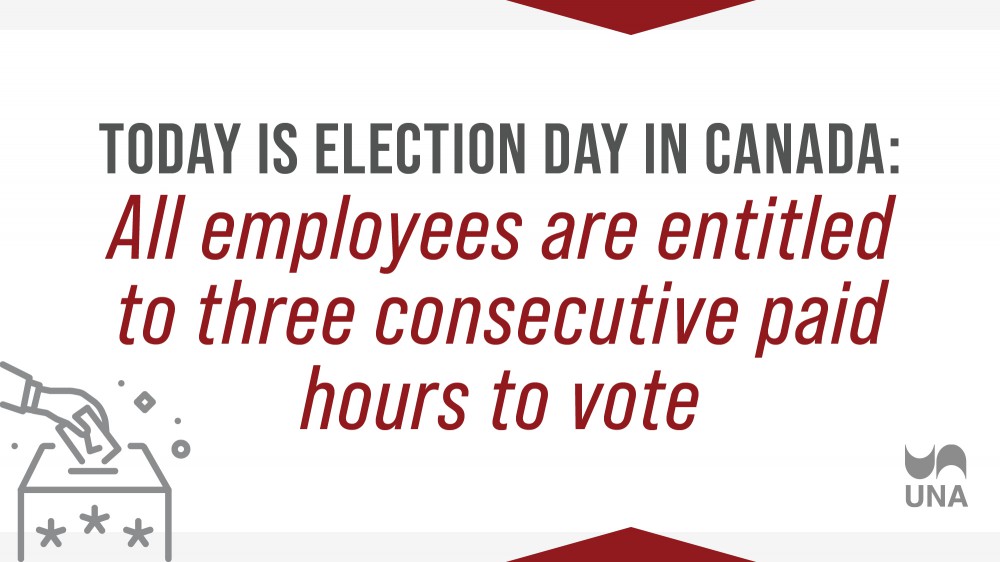Today is Election Day in Canada: All employees are entitled to three consecutive paid hours to vote
The Canada Elections Act entitles all eligible voters to sufficient time to vote on Election Day.
Section 132 of the Canada Elections Act allows for three consecutive hours without loss of pay for the purpose of voting.
An Employee’s regular work schedule may already allow for three consecutive hours while the polls are open (from 7:30 a.m. to 7:30 p.m. in Alberta).
So, for example, if a shift begins at noon or ends by 5 p.m., an employee would have the three hours required by legislation to vote and would not be entitled to take additional time off.
Section 132 of the Canada Elections Act states:
132 (1) Every employee who is an elector is entitled, during voting hours on polling day, to have three consecutive hours for the purpose of casting his or her vote and, if his or her hours of work do not allow for those three consecutive hours, his or her employer shall allow the time for voting that is necessary to provide those three consecutive hours.
132 (2) The time that the employer shall allow for voting under subsection (1) is at the convenience of the employer.
In addition, Section 133 of the Act states:
133 (1) No employer may make a deduction from the pay of an employee, or impose a penalty, for the time that the employer shall allow for voting under subsection 132.
You are eligible to vote if you are a Canadian citizen who is at least 18-years-old as of Election Day.
Your voter information card has information on where to go to vote, and what you need to bring. However, if you did not receive a card in the mail, you can still register to vote at your polling station.
Elections Canada’s website includes a tool that will allow you to determine your riding and provide a list of candidates and their parties by providing your postal code.
When you go to vote, you should bring identification and a voter card if you have one.
When you arrive, you will be required to prove your identity and address. There are three ways you can do that:
- Show your driver’s licence or any other card issued by a federal, provincial, territorial, or municipal government that shows your photo, name and current address
- Show two pieces of identification that have your name, and one that has you current address. Examples could include your voter information card, a bank statement, a utility bill, a student ID card, birth certificate, or income tax assessment. A complete list of acceptable ID is published by Elections Canada.
- If you have insufficient documentation, you may come with someone who knows you and who is assigned to your polling station who can vouch for you when you declare your identity and address in writing.
Elections Canada has also published a FAQ page about voting on its website.

